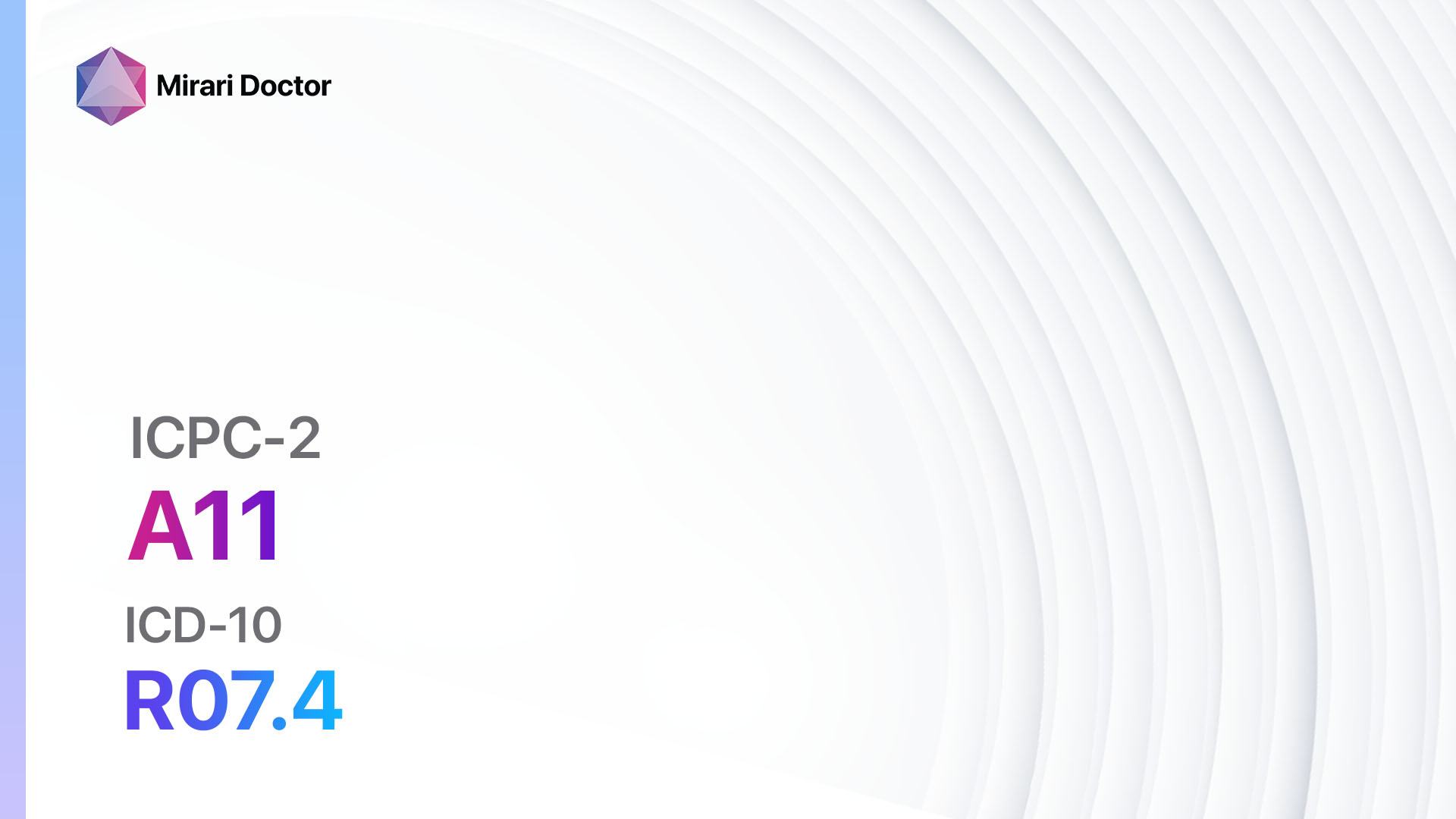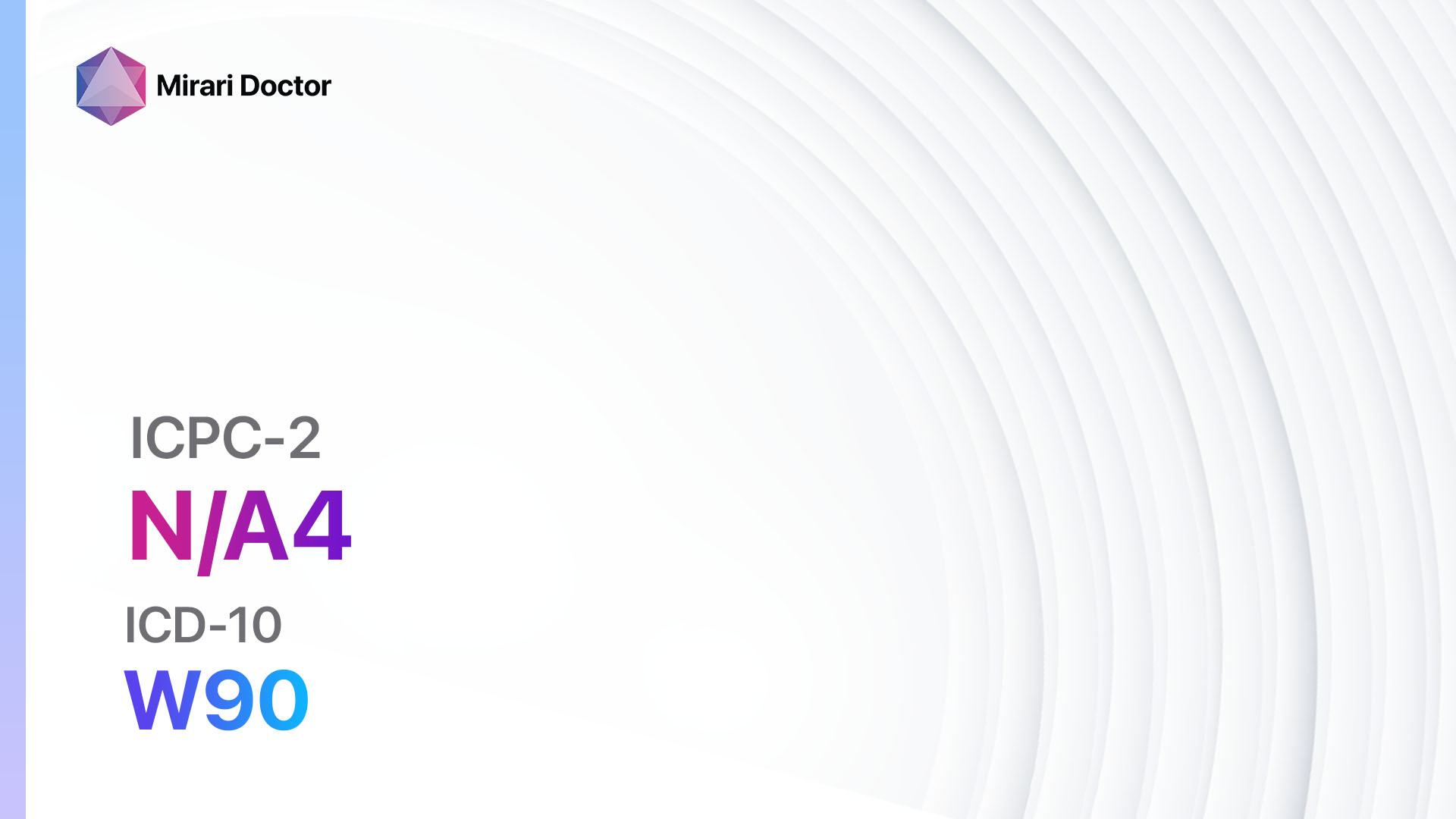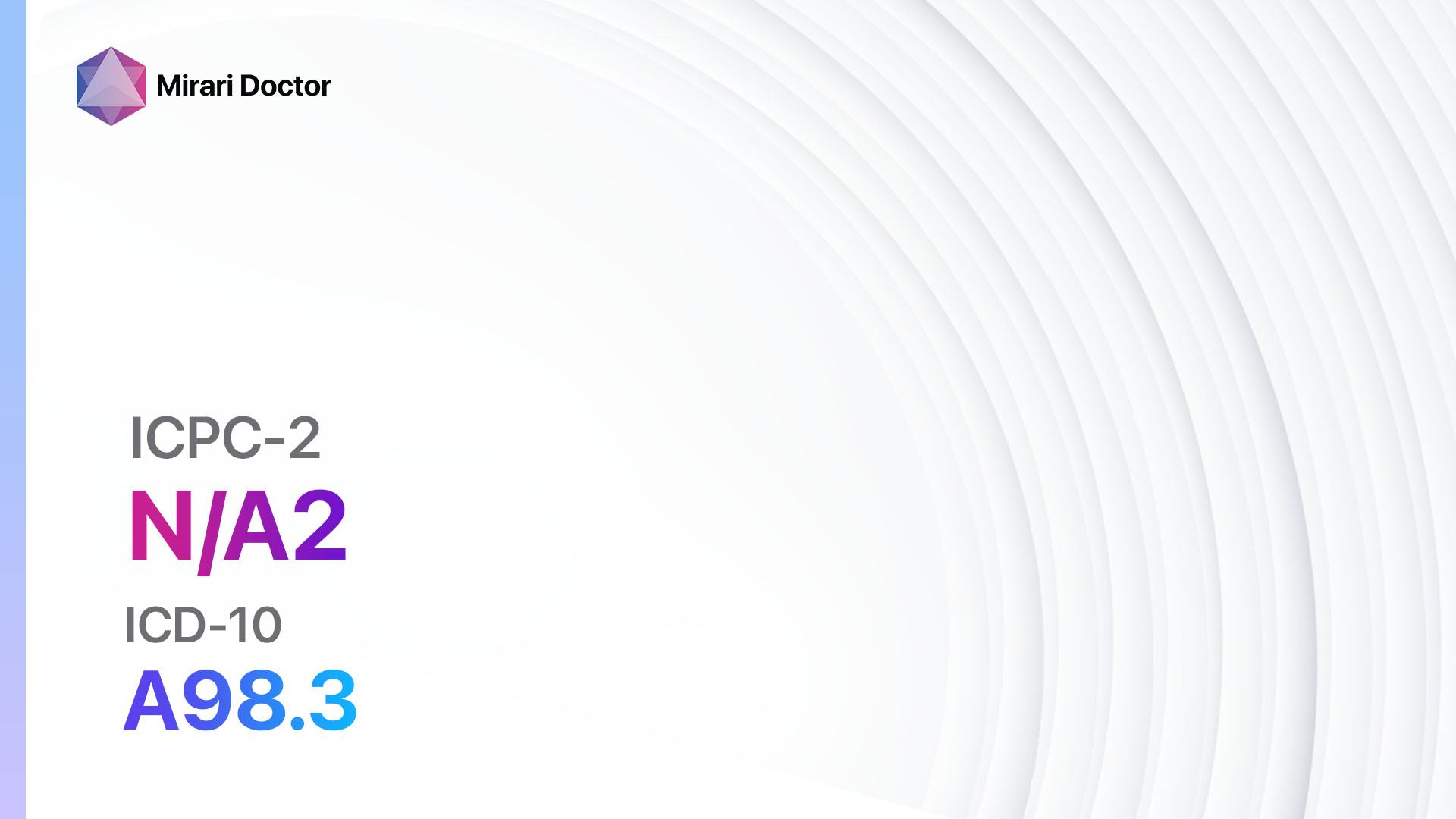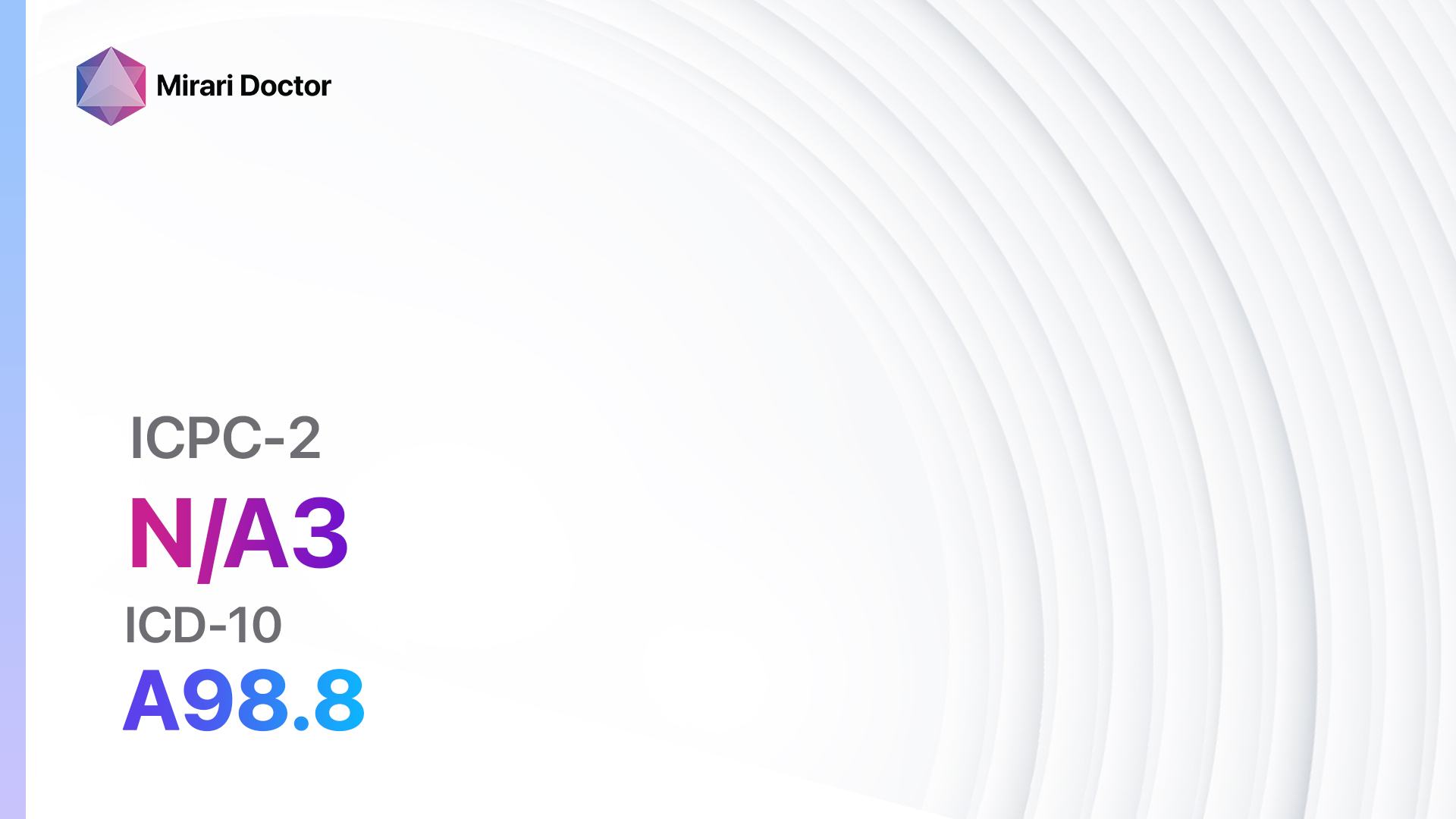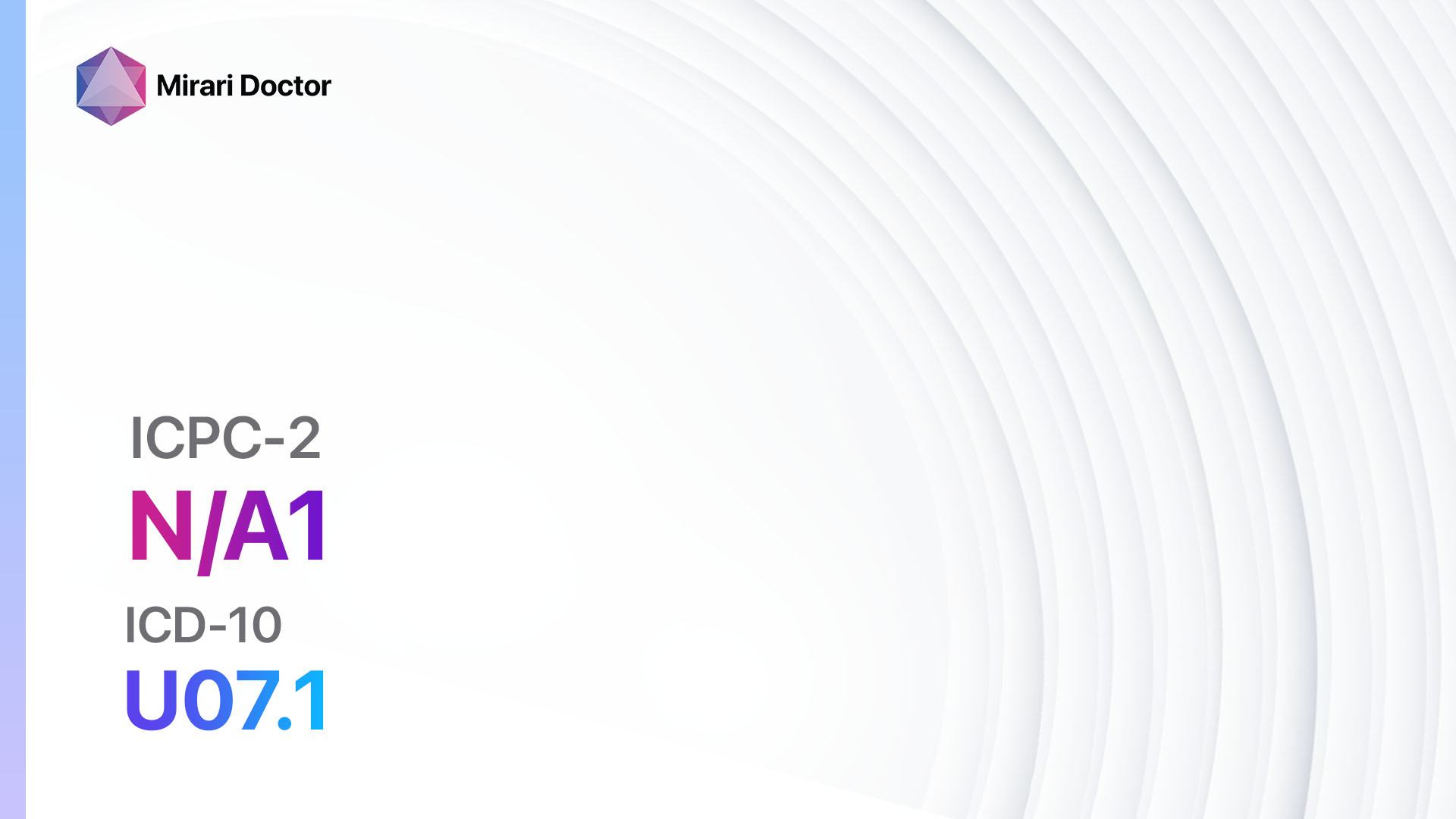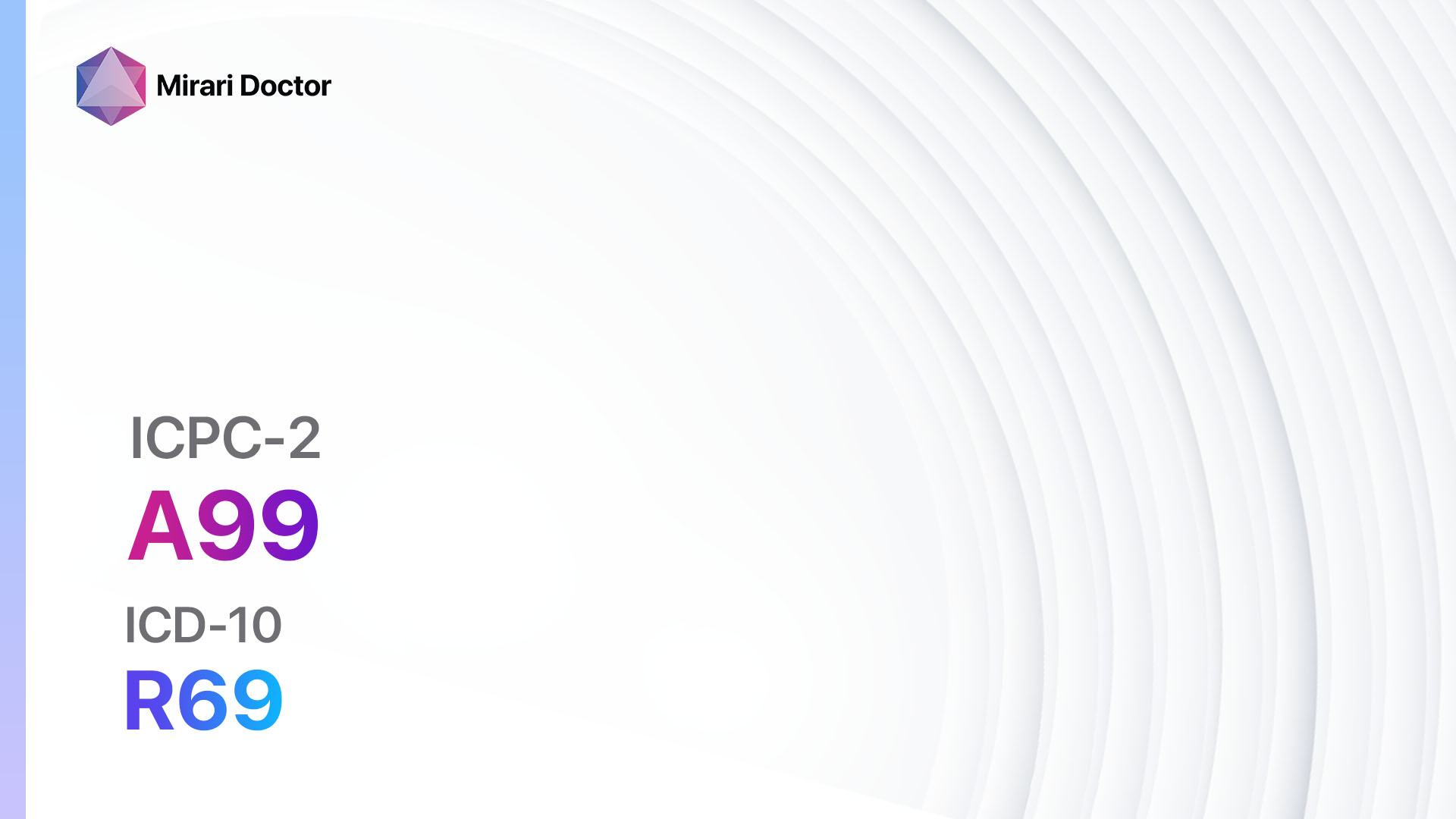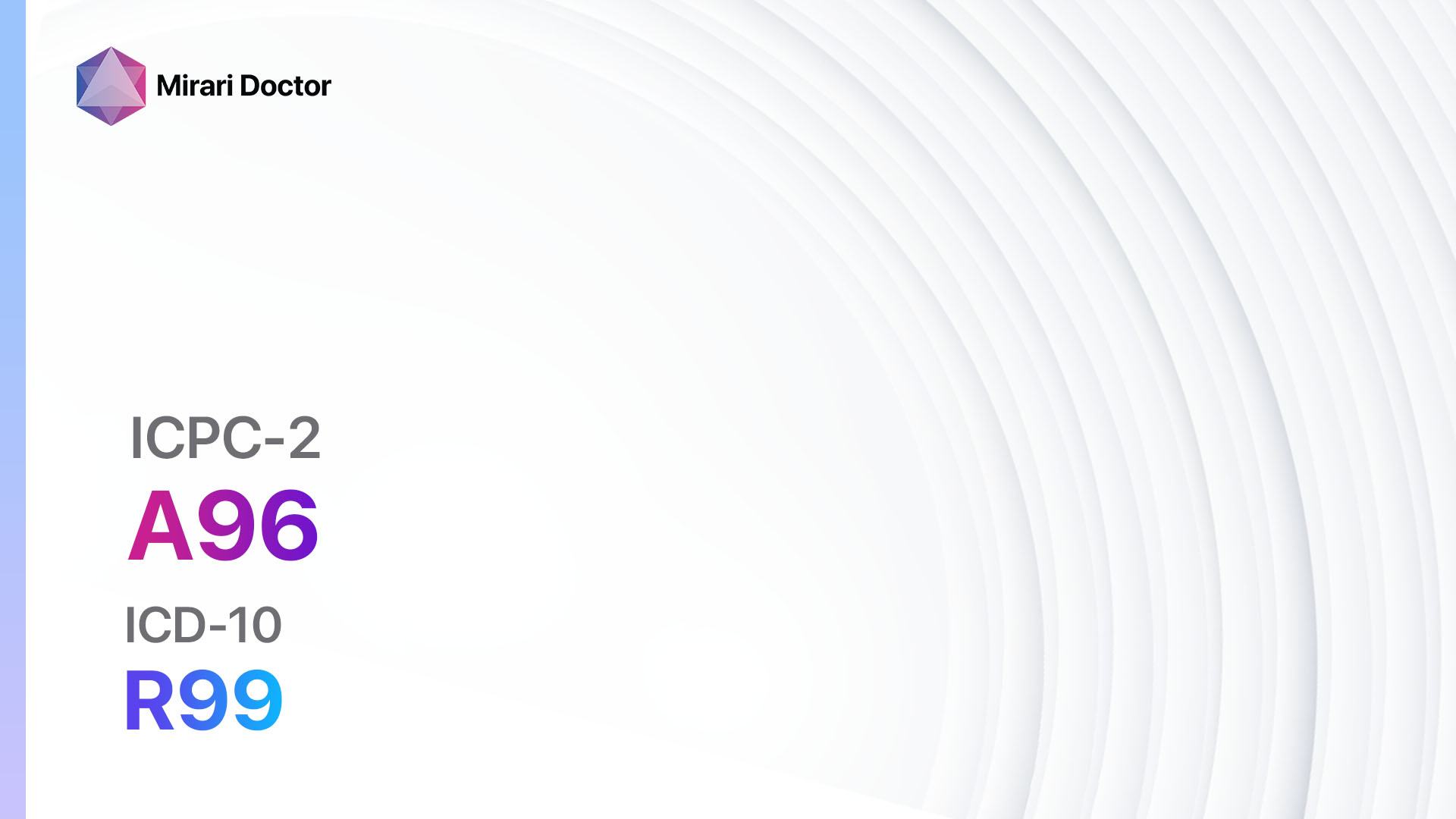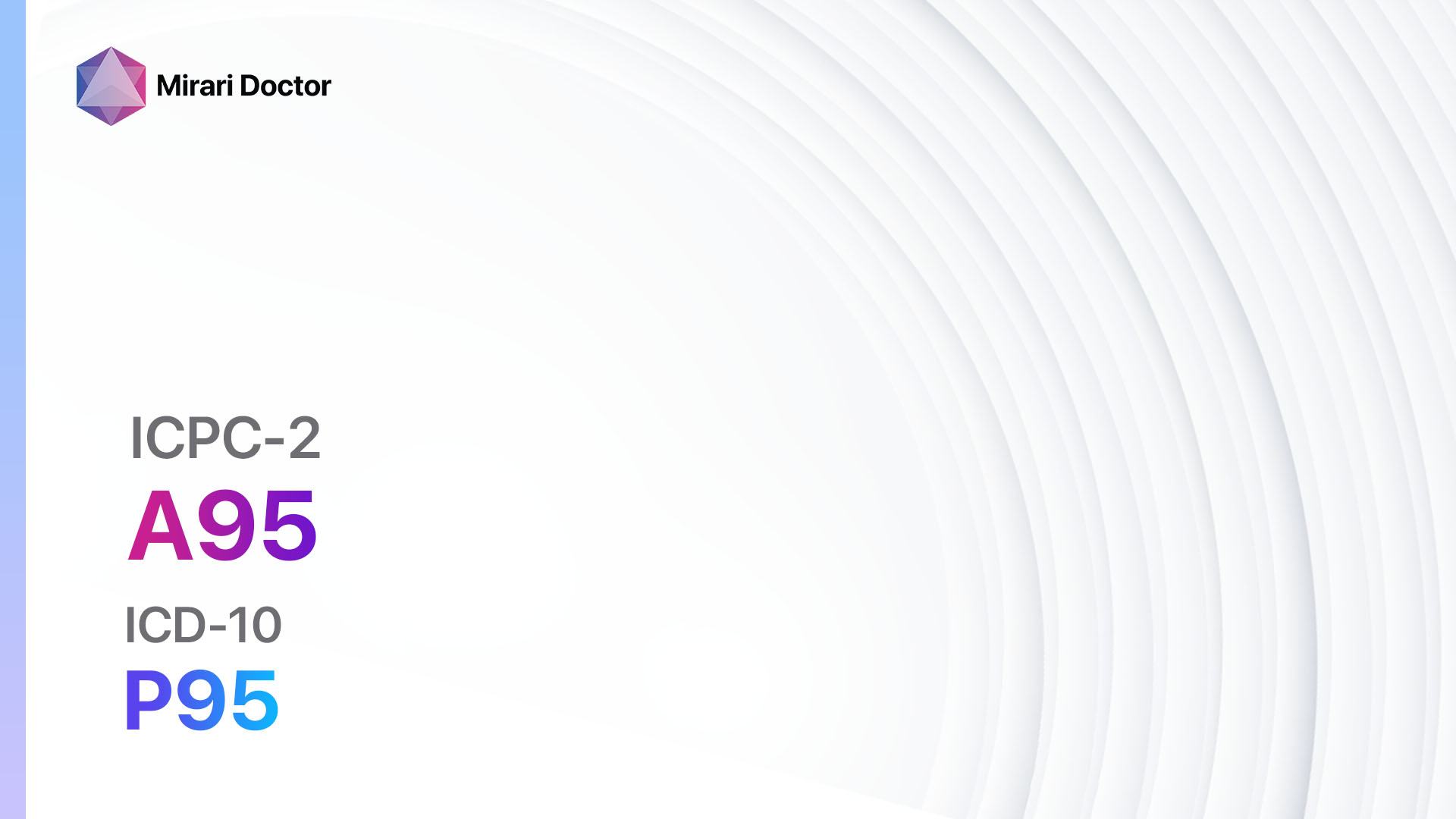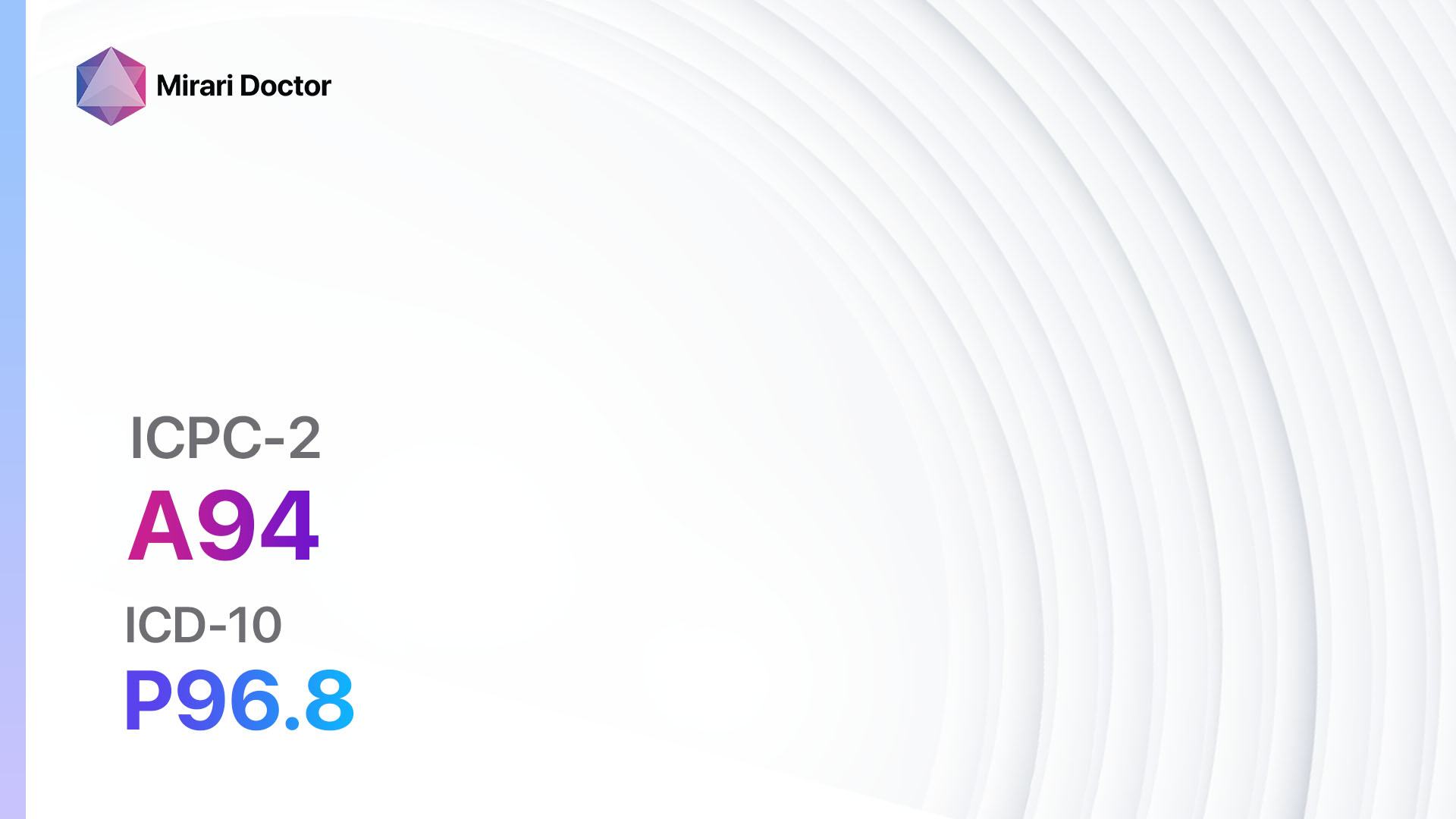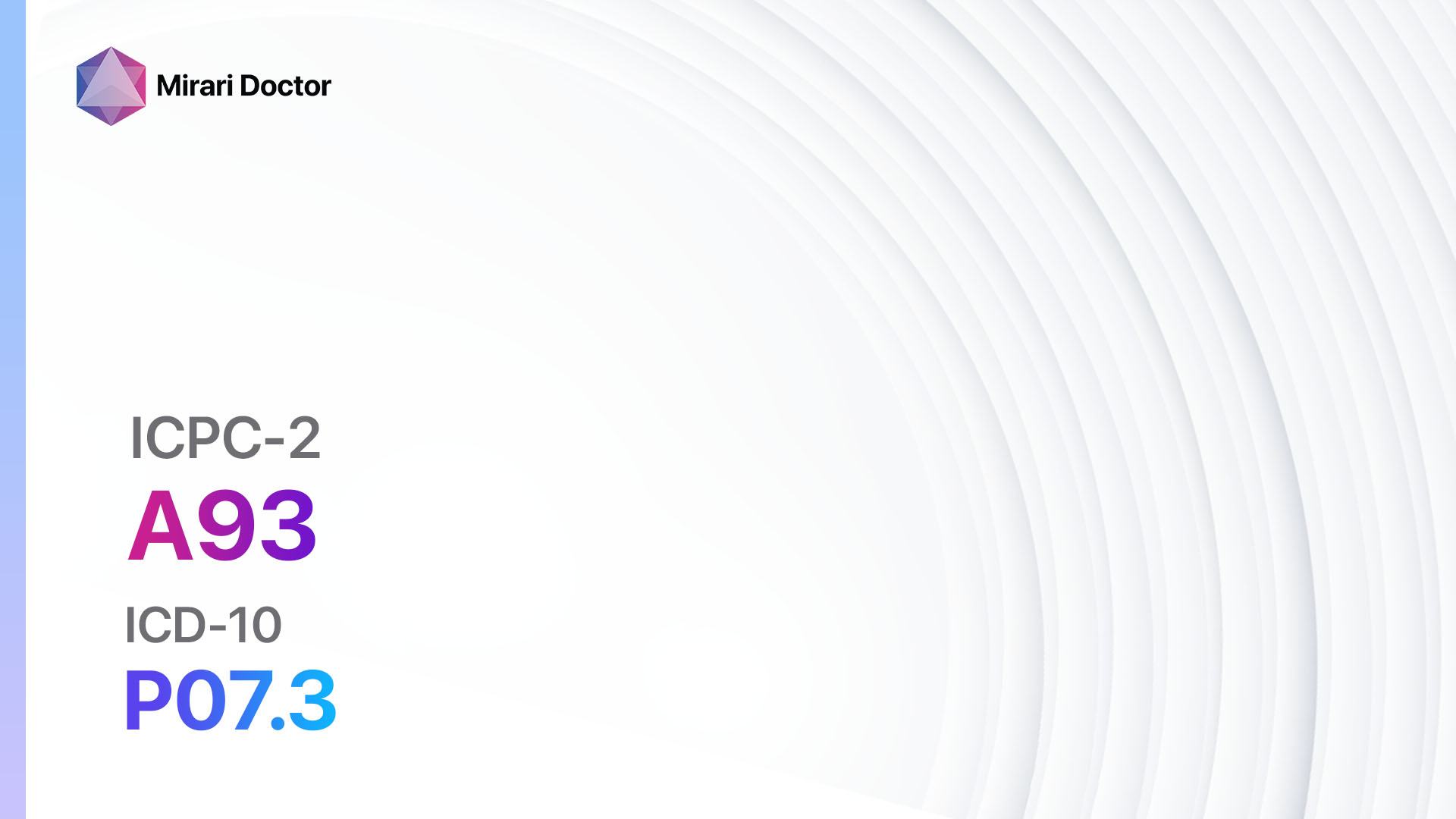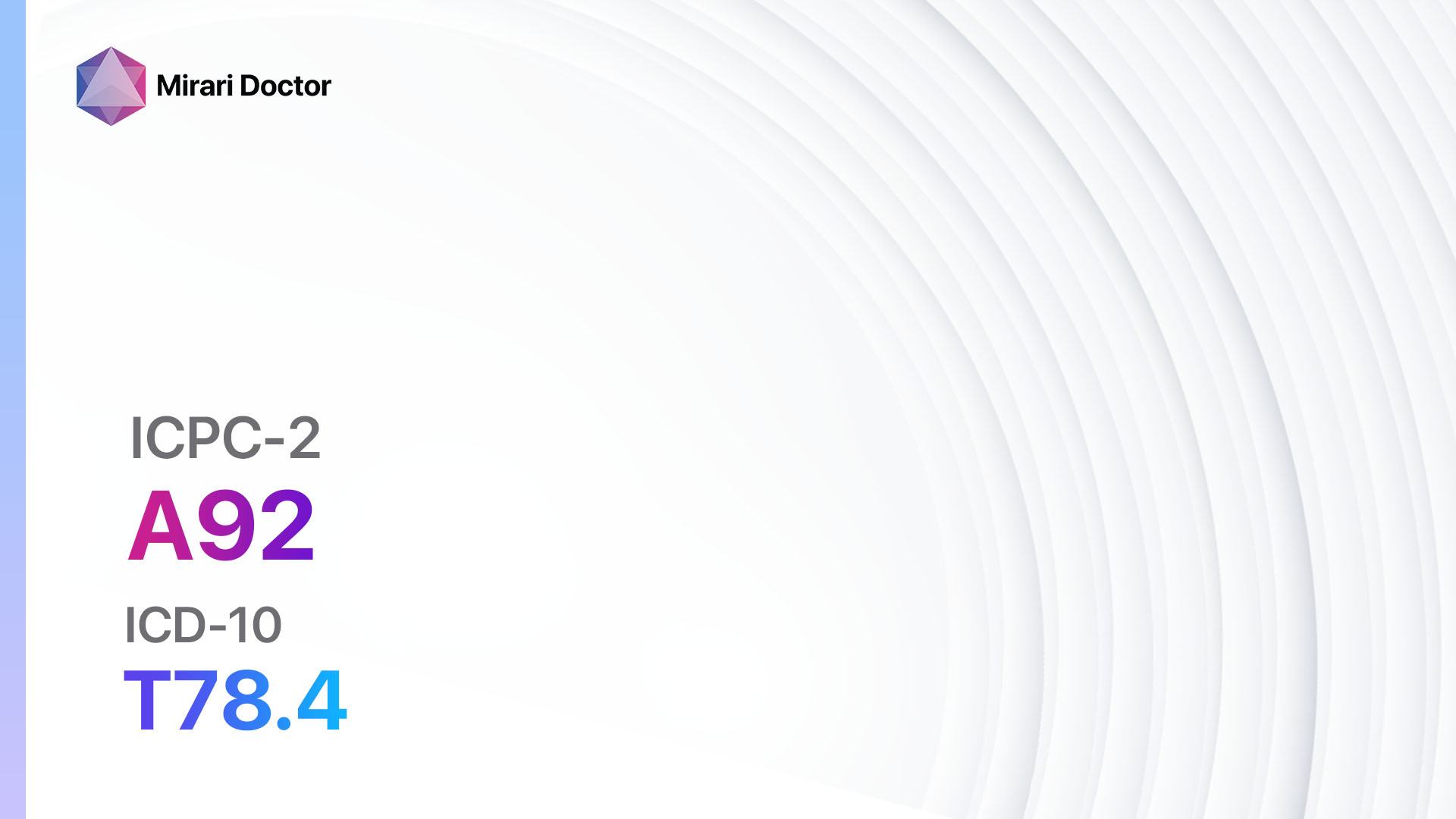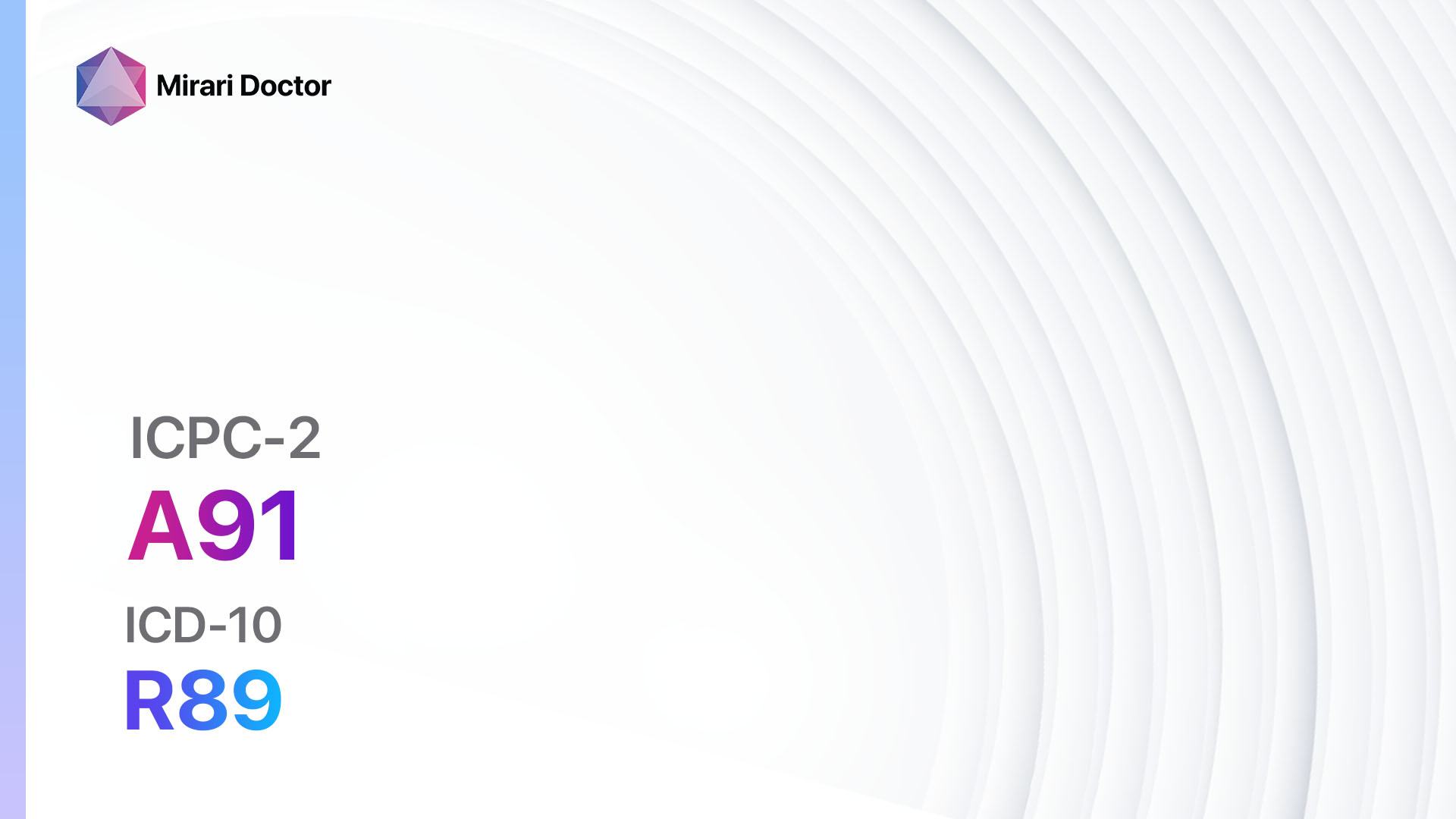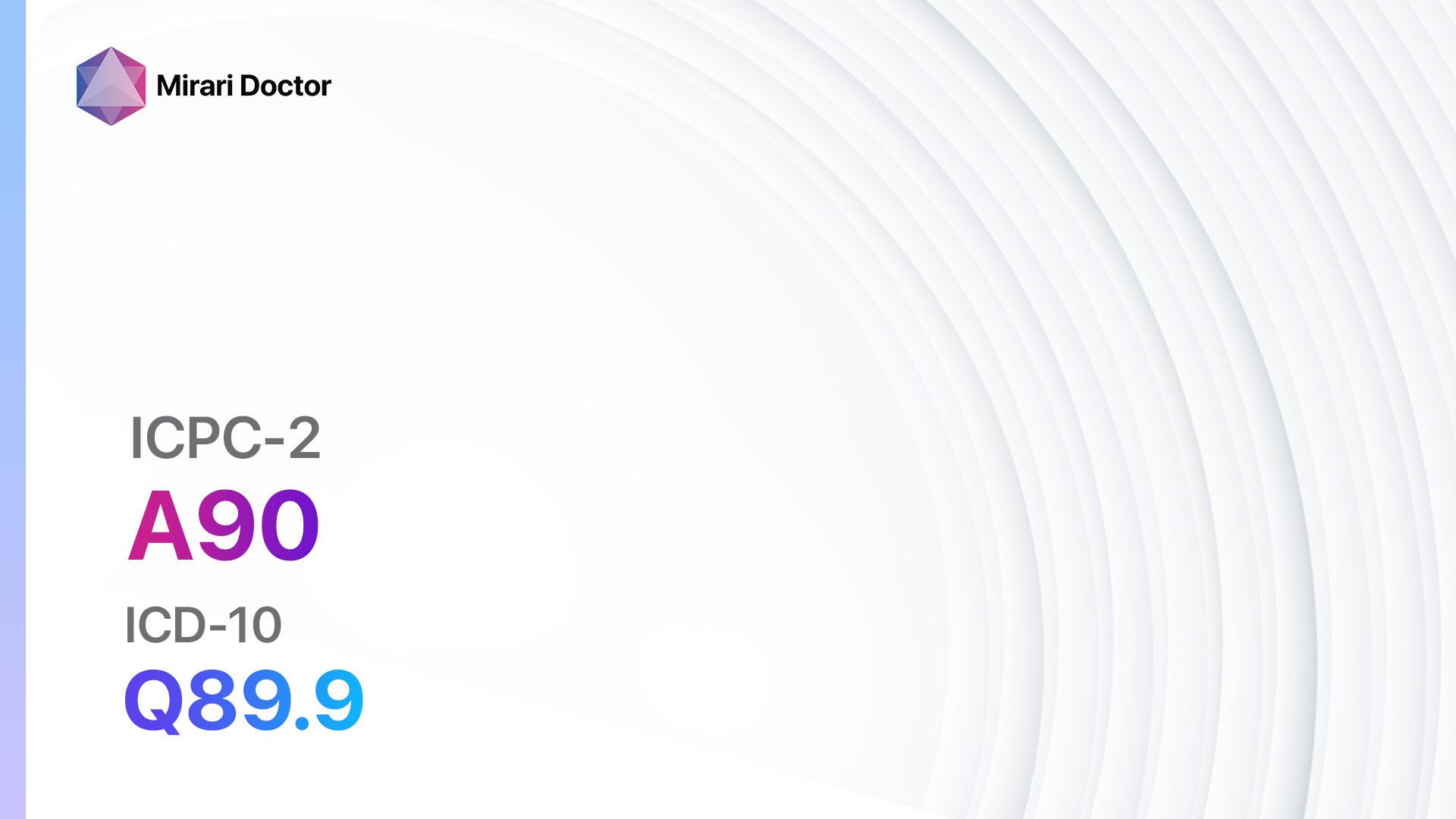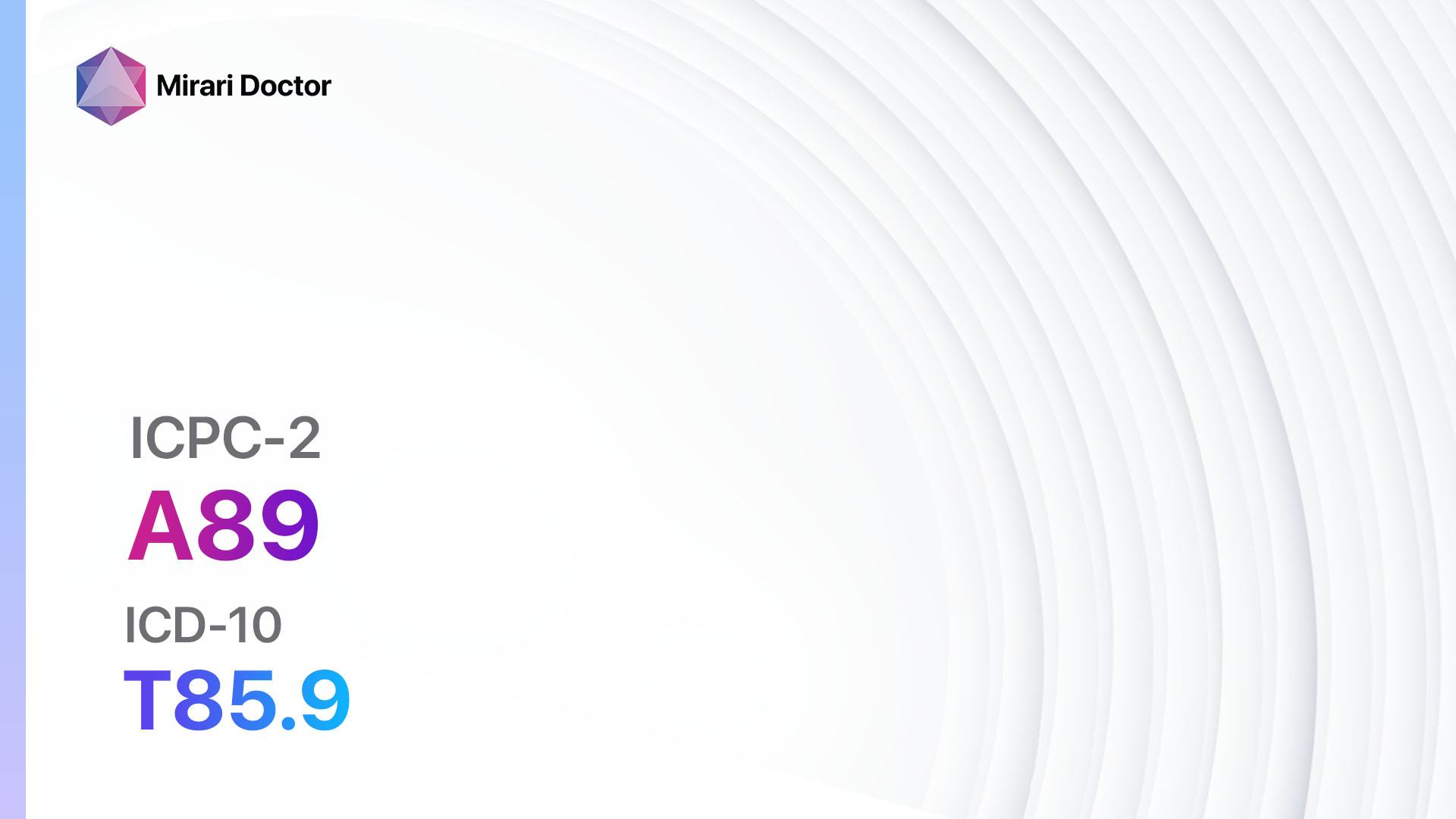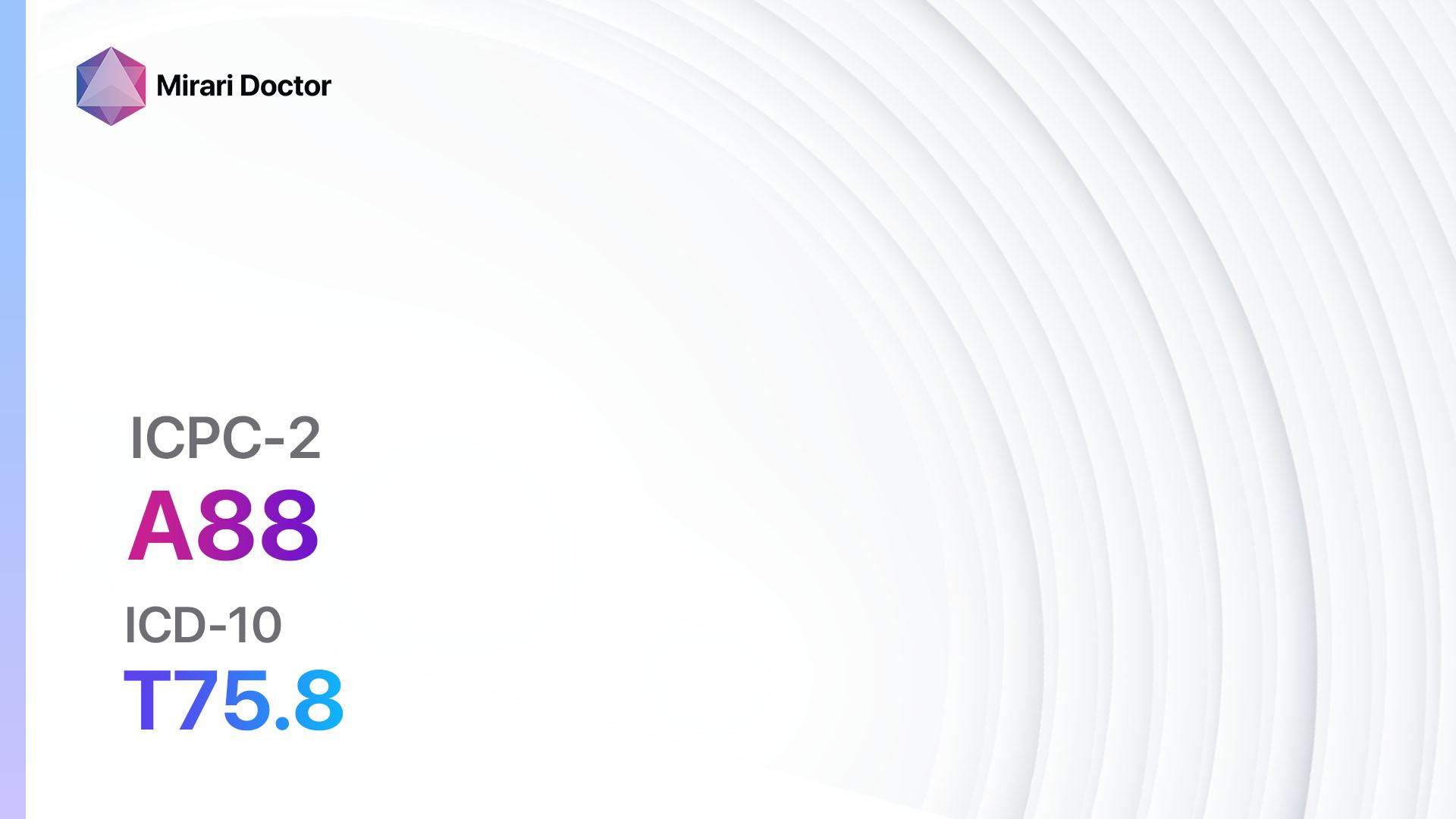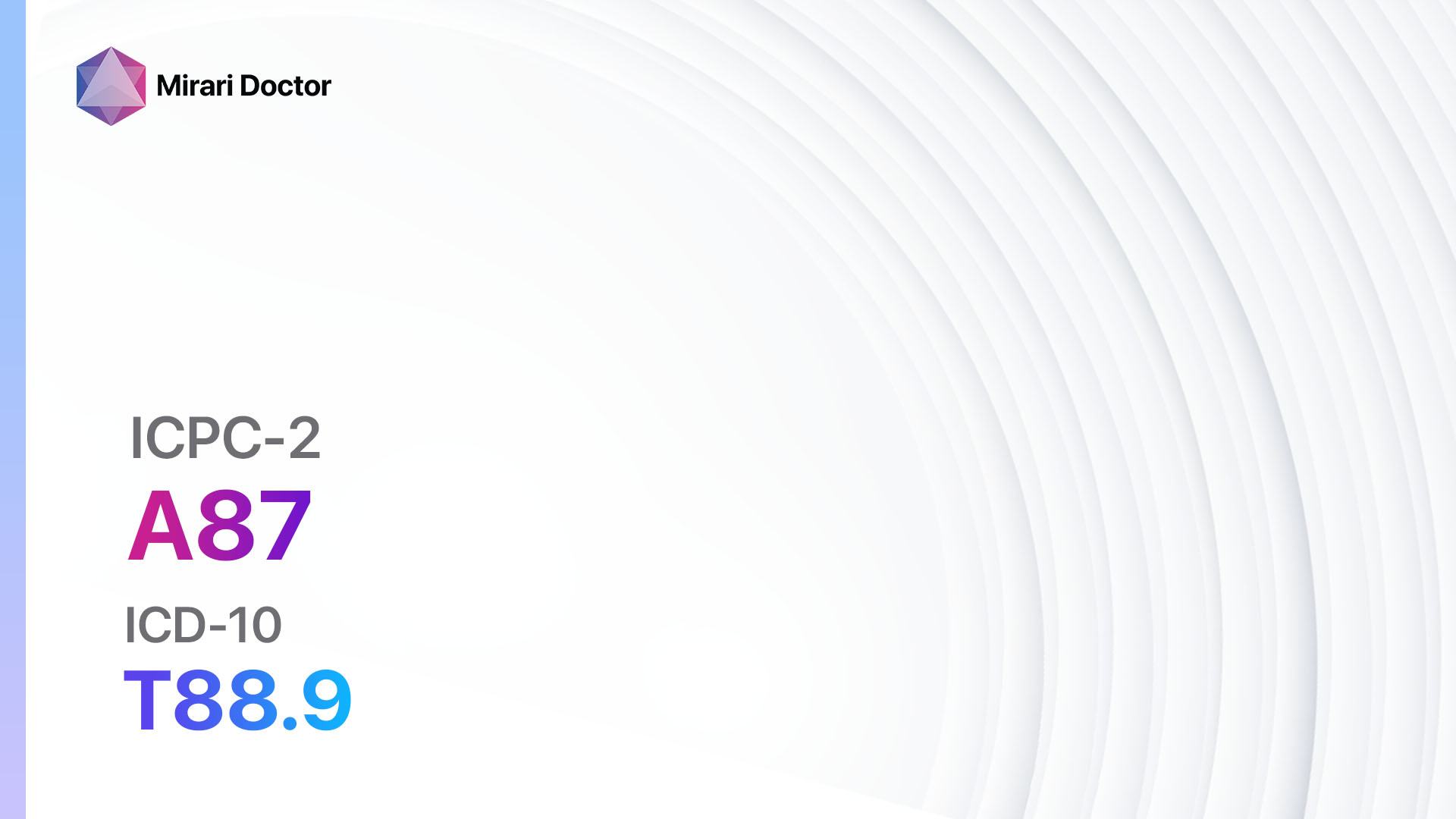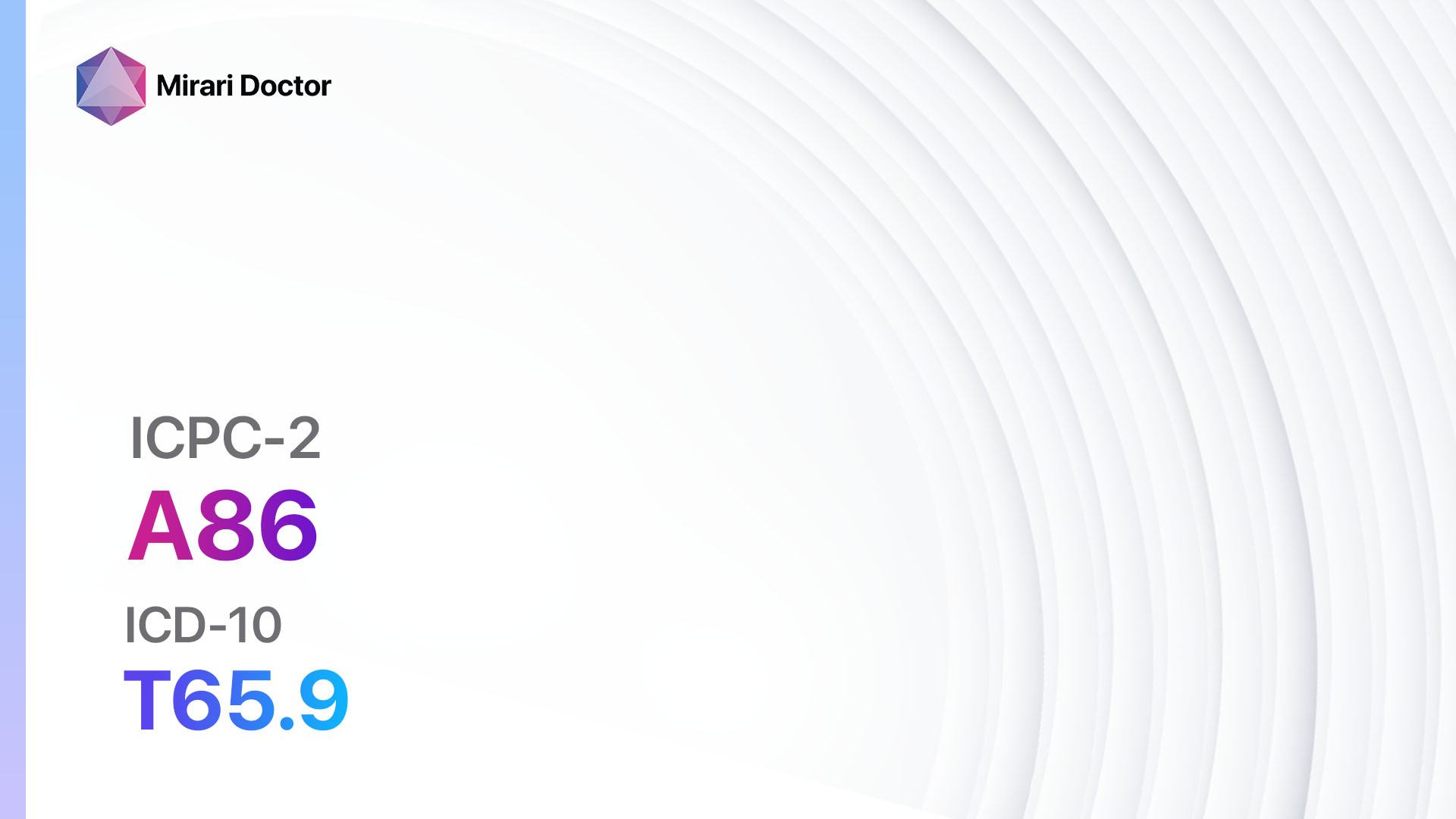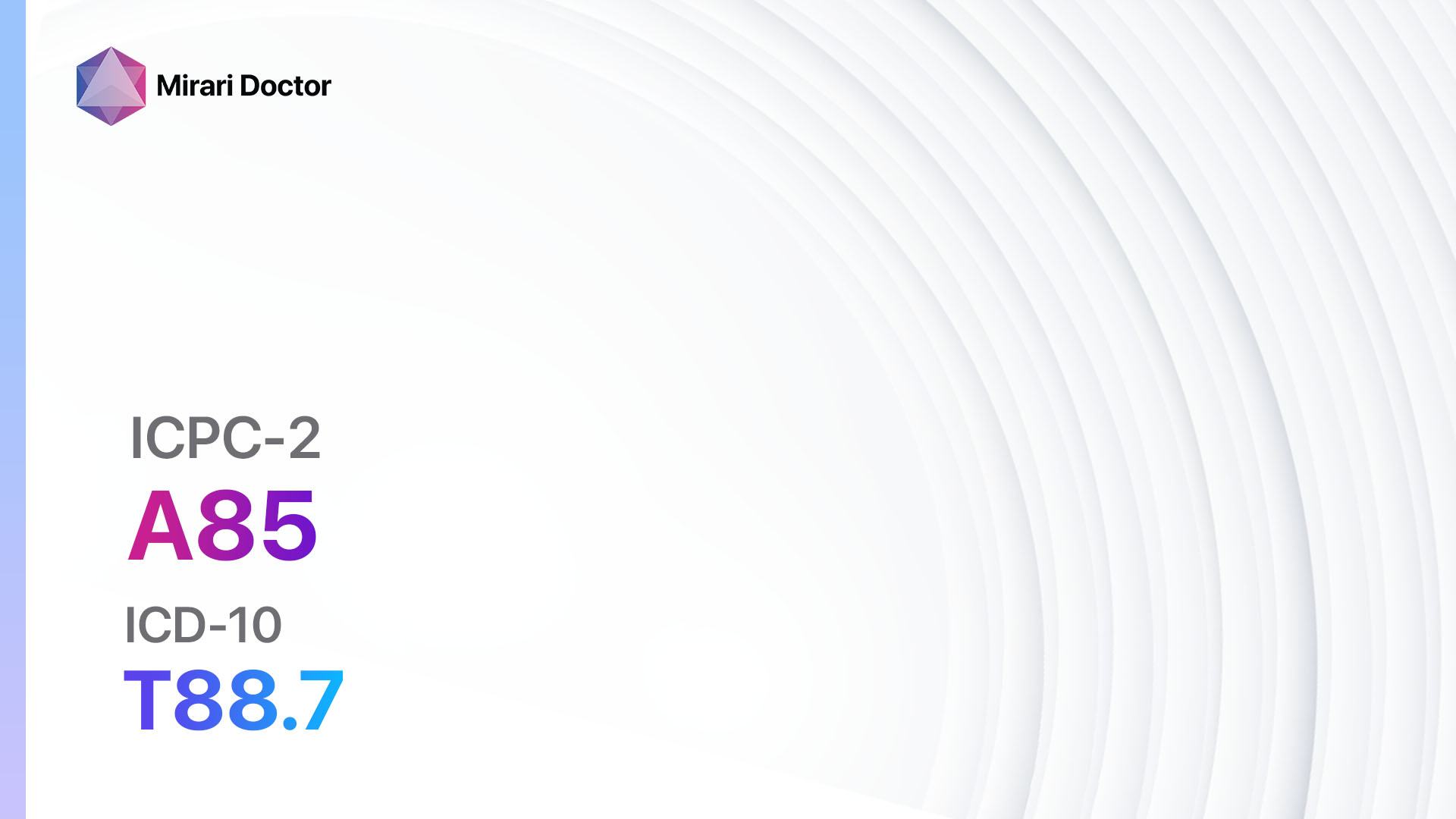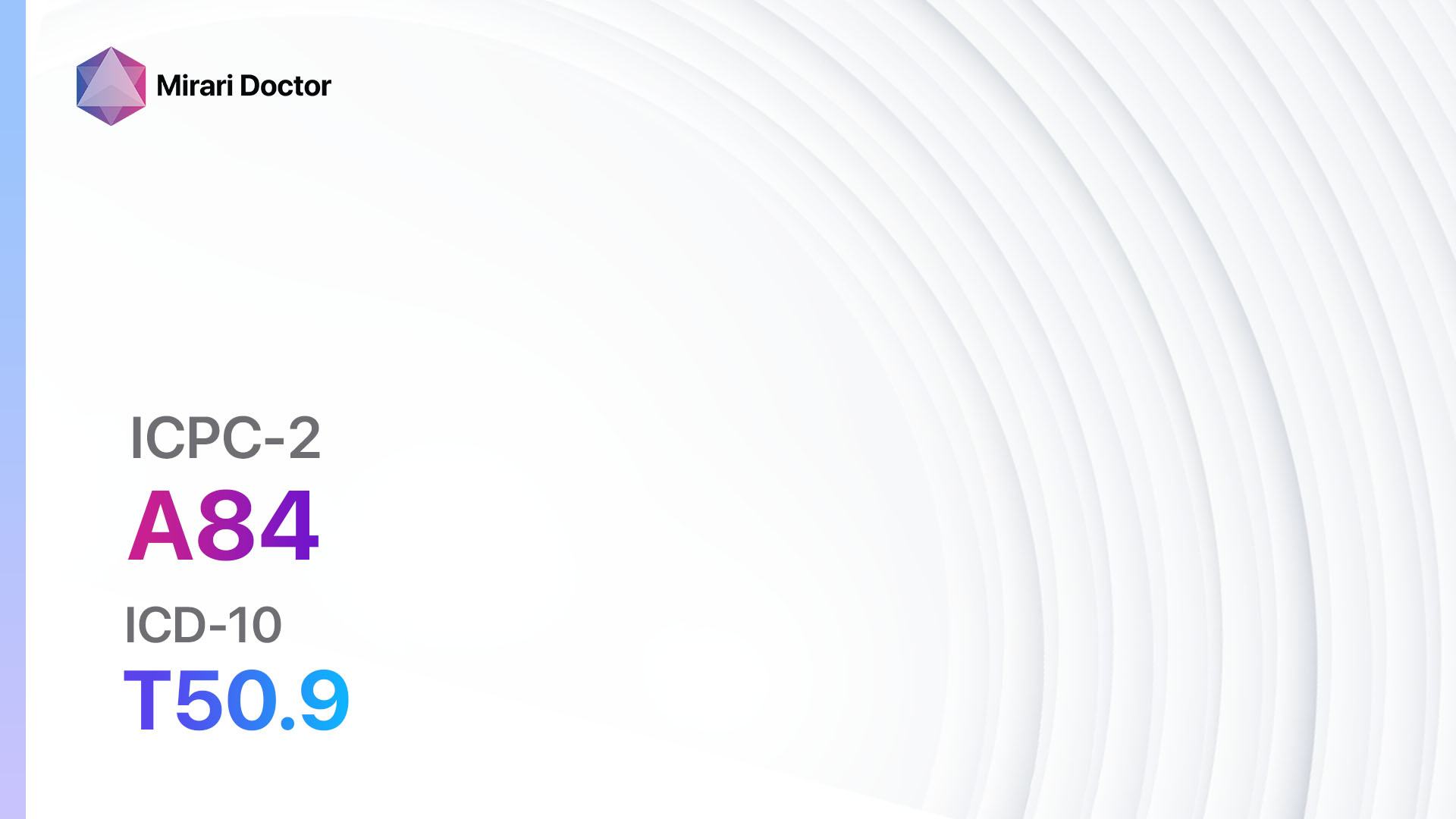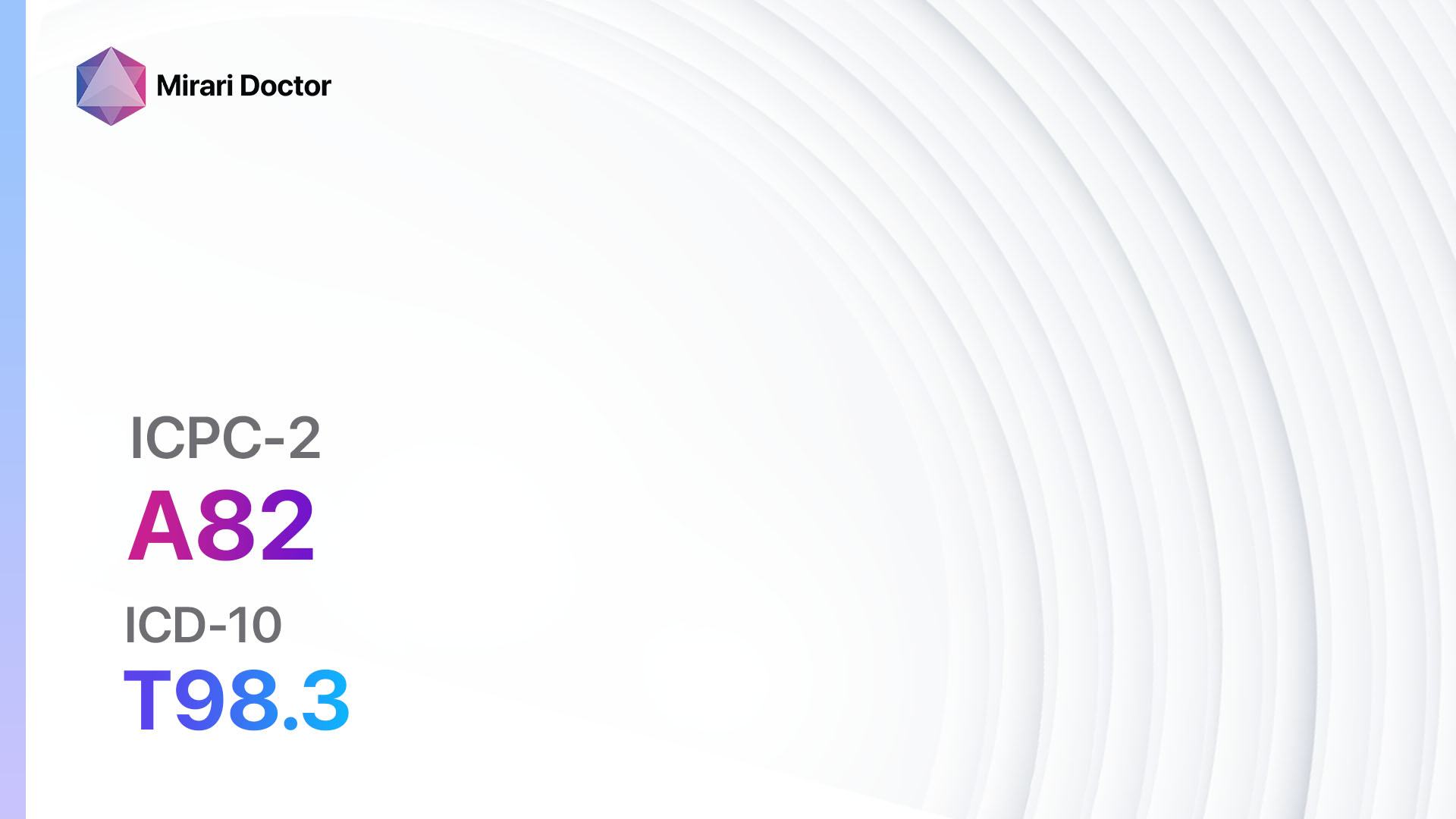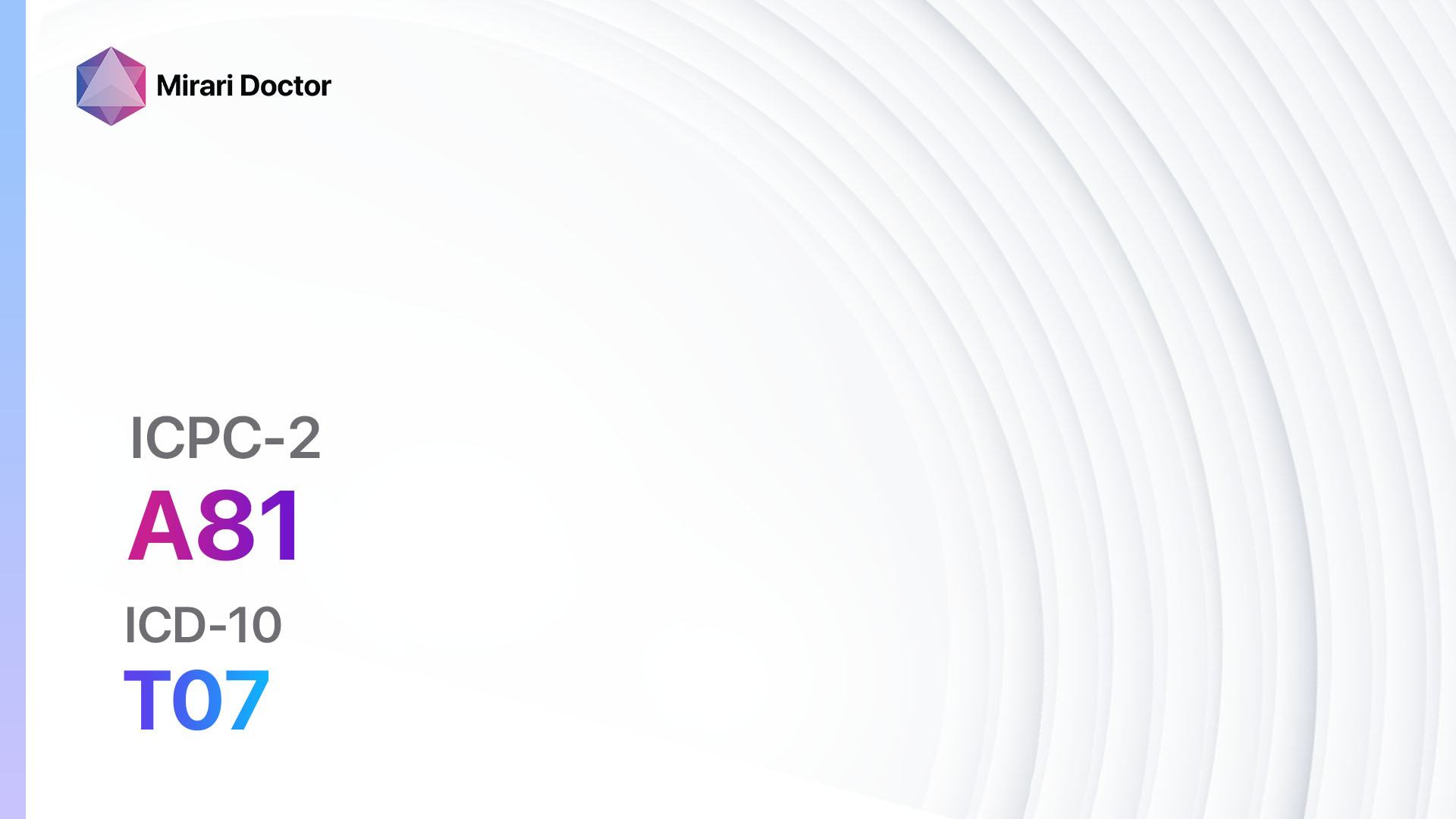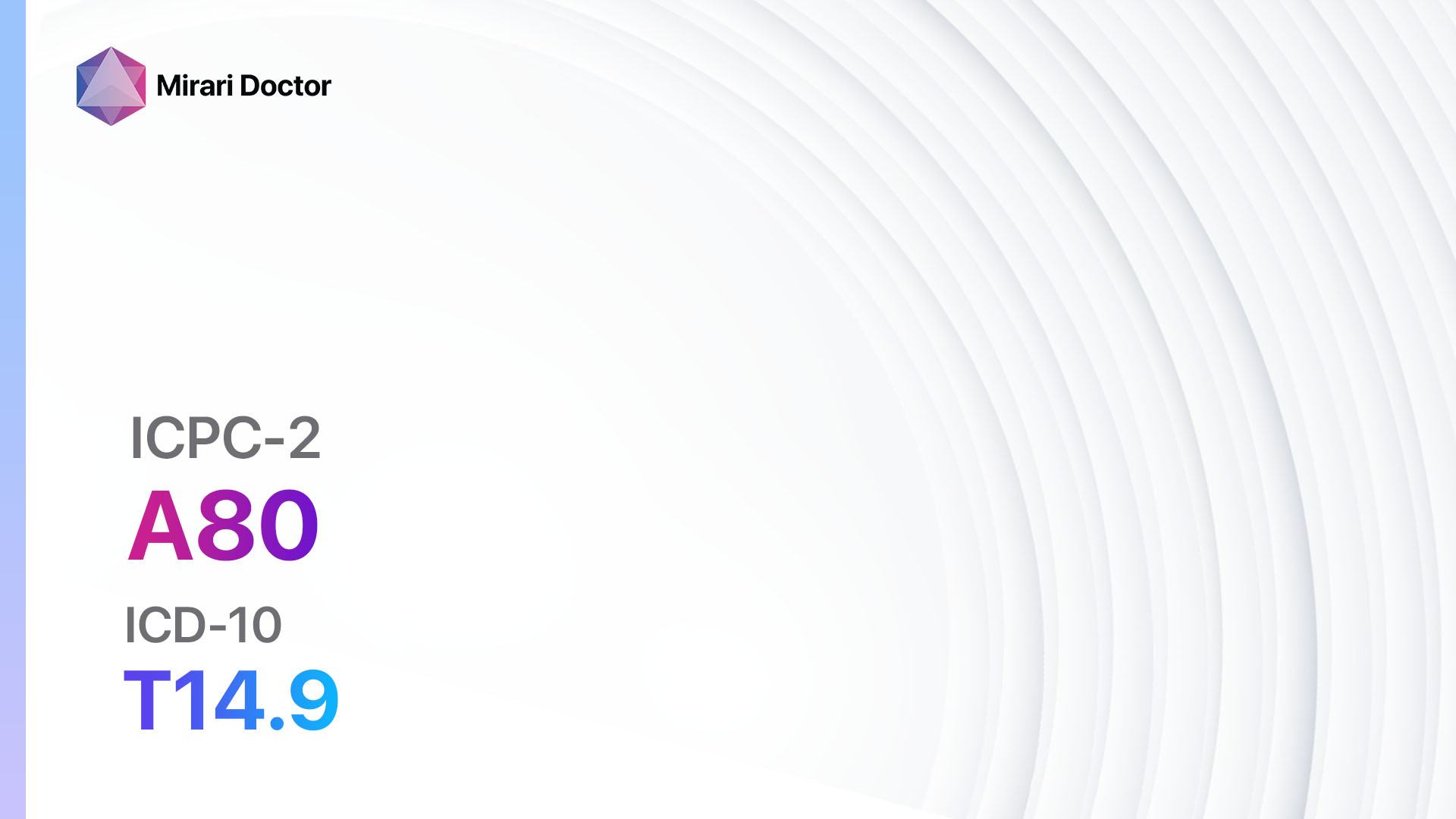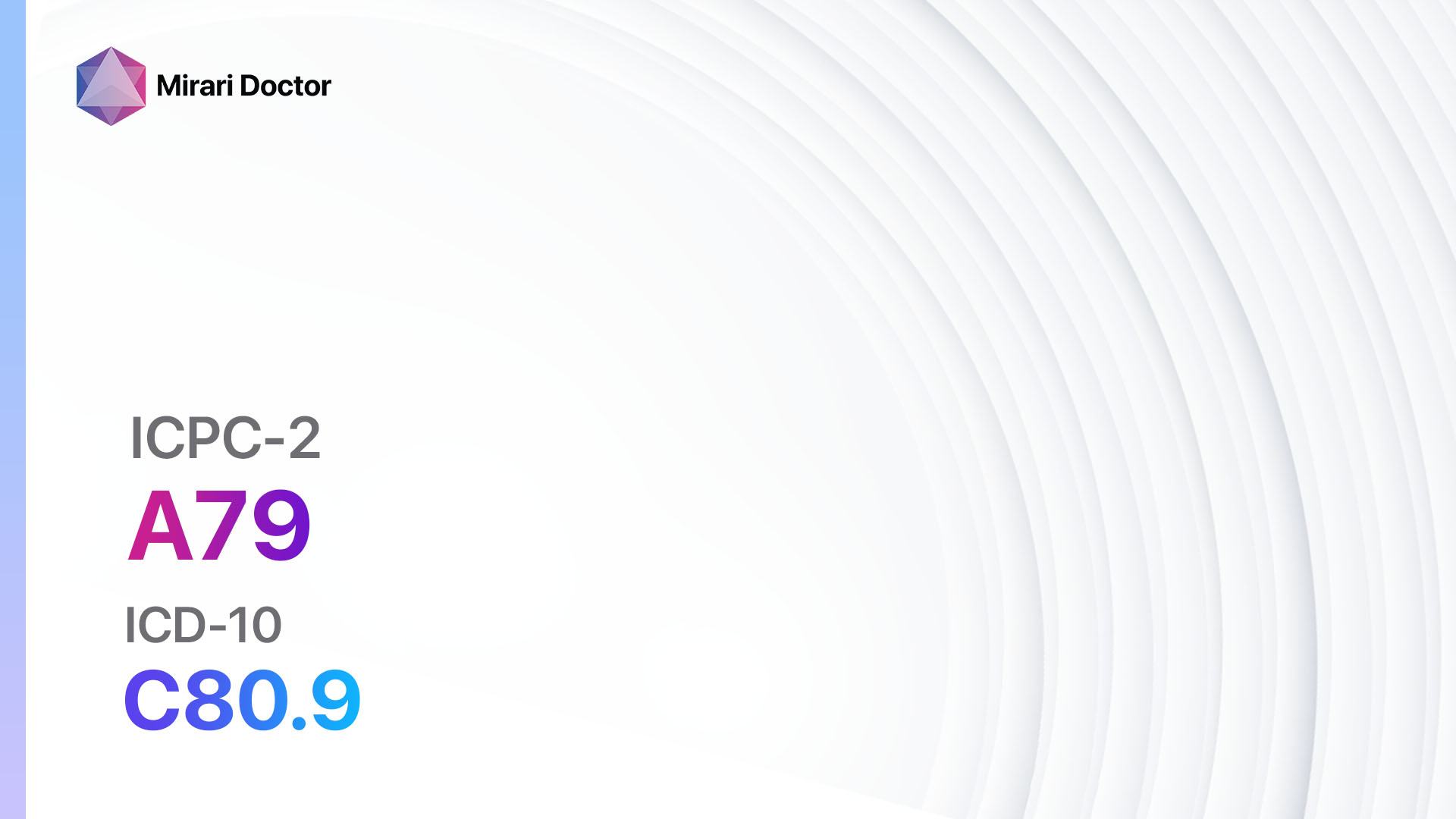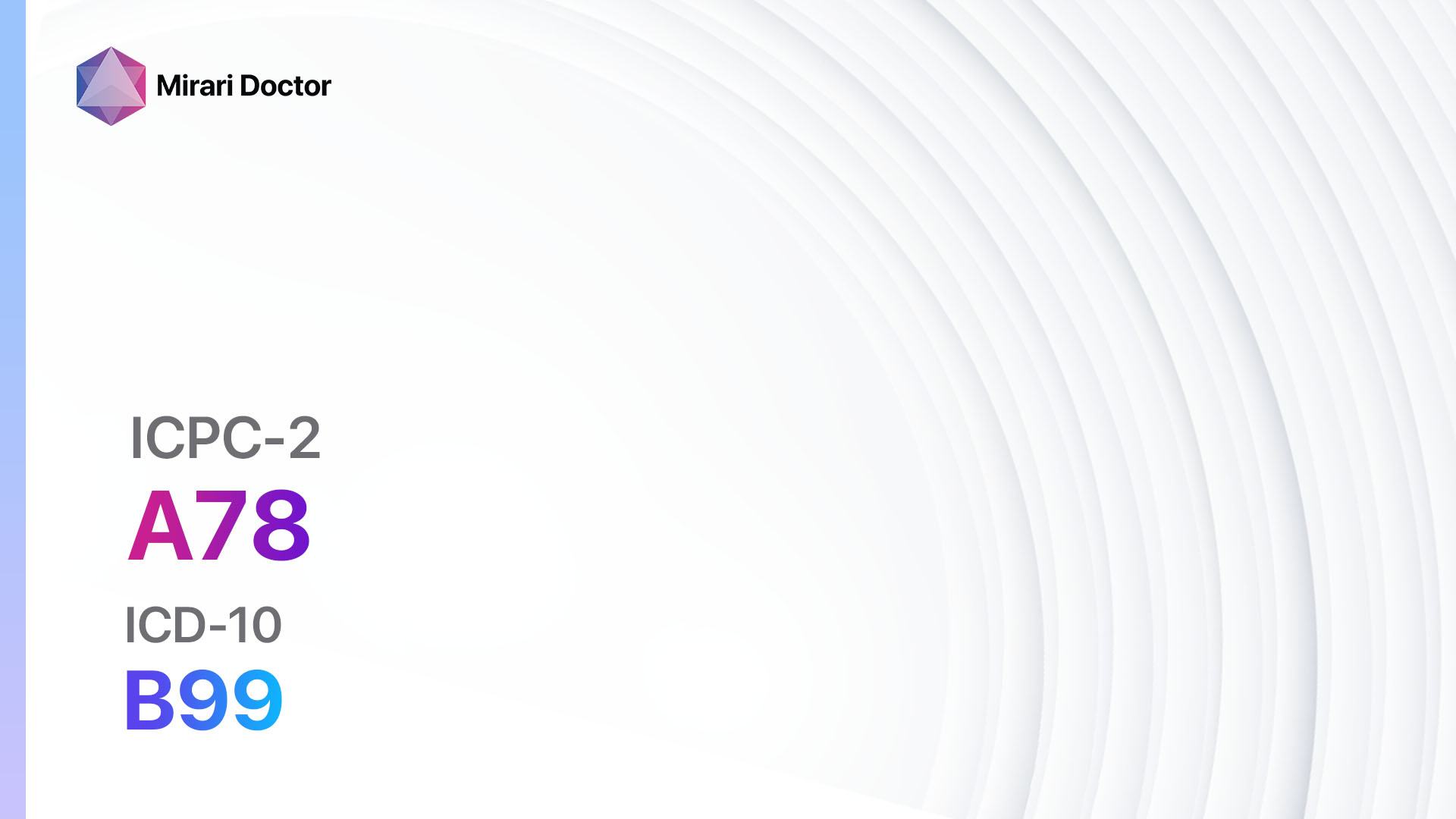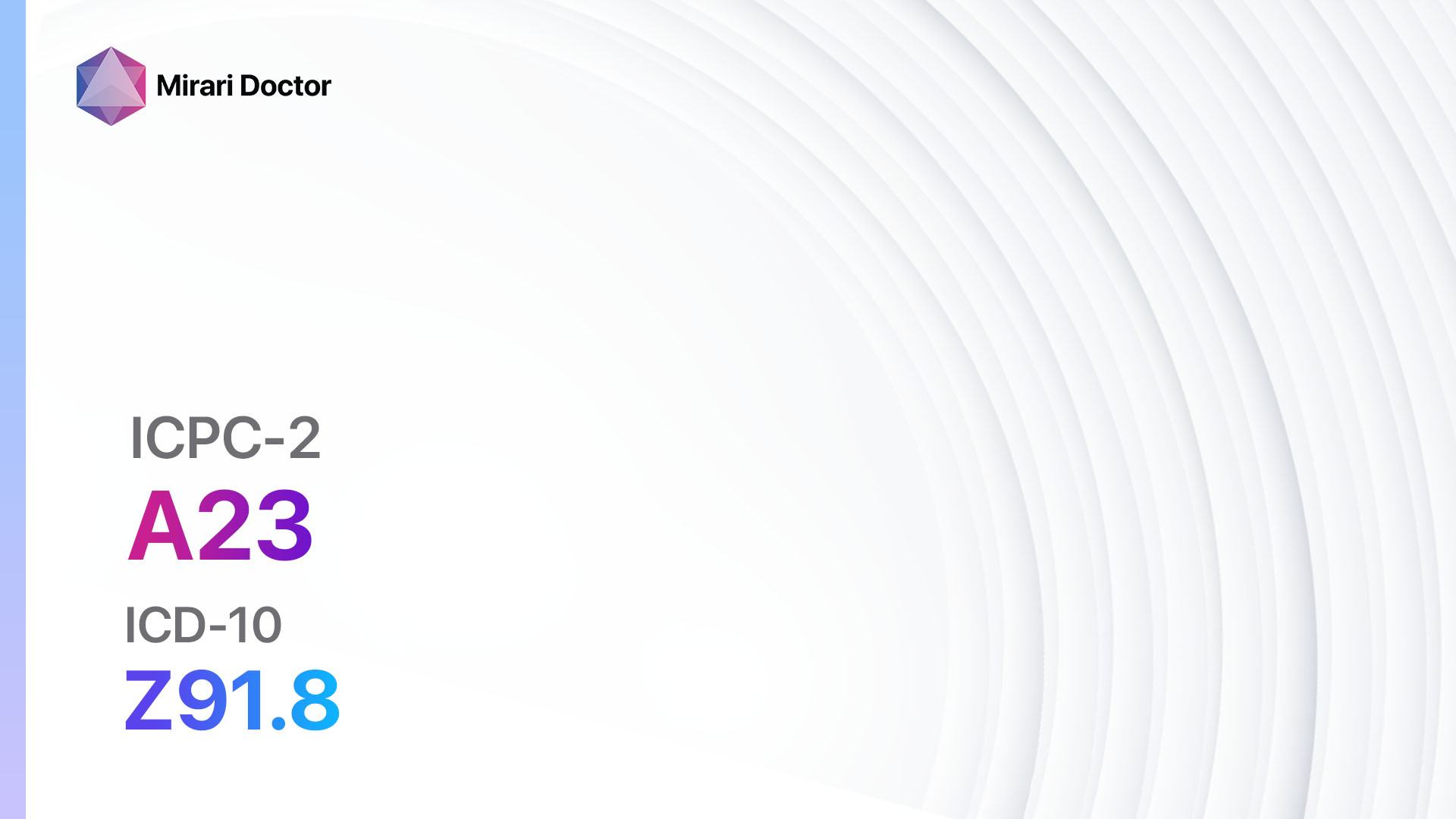
Introduction
Risk factor NOS refers to a non-specific risk factor that is not further specified. It is important to identify and address risk factors in order to prevent the development of various diseases and conditions[1]. This guide aims to provide healthcare professionals with a comprehensive approach to diagnosing and managing risk factor NOS.
Codes
- ICPC-2 Code: A23 Risk factor NOS
- ICD-10 Code: Z91.8 Other specified personal risk factors, not elsewhere classified[2]
Symptoms
- Risk factor NOS does not typically present with specific symptoms.[3]
- However, patients may exhibit symptoms associated with the underlying conditions or diseases that the risk factor predisposes them to.
Causes
- Risk factor NOS can be caused by a variety of factors, including:
- Genetic predisposition[4]
- Environmental factors[5]
- Lifestyle choices[6]
- Medical conditions[7]
Diagnostic Steps
Medical History
- Conduct a comprehensive medical history to gather relevant patient information, including:[8]
- Family history of diseases or conditions associated with the risk factor
- Personal medical history
- Lifestyle choices (e.g., smoking, alcohol consumption, physical activity)
- Environmental exposures
- Medications and supplements
Physical Examination
- Perform a thorough physical examination, focusing on specific signs or findings indicative of underlying conditions associated with the risk factor.[9]
- Pay attention to vital signs, body mass index (BMI), and any physical abnormalities.
Laboratory Tests
- Perform laboratory tests to assess various parameters and identify any abnormalities that may be associated with the risk factor.[10]
- The specific tests may vary depending on the suspected underlying conditions, but some common tests include:
- Complete blood count (CBC)
- Lipid profile
- Liver function tests
- Renal function tests
- Fasting blood glucose
- Thyroid function tests
Diagnostic Imaging
- Consider the use of imaging modalities to visualize and assess any structural abnormalities or changes associated with the risk factor.
- The choice of imaging modality may depend on the suspected underlying conditions, but some common options include:
- X-rays
- Ultrasound
- CT scans
- MRIs
Other Tests
- Additional diagnostic tests may be necessary based on the clinical presentation and suspected underlying conditions.
- These tests may include:
- Electrocardiogram (ECG)
- Echocardiogram
- Stress test
- Genetic testing
- Biopsy
Follow-up and Patient Education
- Schedule regular follow-up appointments to monitor the patient’s progress and assess any changes in their condition.
- Provide patient education regarding the importance of managing the identified risk factors and adopting a healthy lifestyle.
- Encourage patients to adhere to prescribed medications and treatments.
Possible Interventions
Traditional Interventions
Medications:
Top 5 drugs for Risk factor NOS:
- Statins:
- Cost: Generic versions can be $3-$50/month.
- Contraindications: Active liver disease, hypersensitivity.
- Side effects: Muscle pain, diarrhea, upset stomach.
- Severe side effects: Rhabdomyolysis, liver damage.
- Drug interactions: Grapefruit juice, other cholesterol-lowering agents.
- Warning: Regular liver function tests required.
- Antiplatelet agents:
- Cost: Aspirin is inexpensive (<$10/month). Clopidogrel is $10-$100/month for generic.
- Contraindications: Active bleeding, peptic ulcer disease.
- Side effects: Upset stomach, bleeding.
- Severe side effects: Severe bleeding, allergic reactions.
- Drug interactions: NSAIDs, other blood thinners.
- Warning: Risk of bleeding.
- ACE inhibitors:
- Cost: Generics can be $10-$50/month.
- Contraindications: History of angioedema with ACE inhibitors, renal artery stenosis.
- Side effects: Cough, elevated blood urea nitrogen.
- Severe side effects: Angioedema, hyperkalemia.
- Drug interactions: Potassium supplements, NSAIDs.
- Warning: Monitoring of renal function and potassium is required.
- Beta-blockers:
- Cost: Generic versions are typically <$30/month.
- Contraindications: Severe bradycardia, uncontrolled heart failure.
- Side effects: Fatigue, dizziness, bradycardia.
- Severe side effects: Bronchospasm, heart block.
- Drug interactions: Calcium channel blockers, insulin.
- Warning: Should not be abruptly stopped.
- Diuretics:
- Cost: Generic versions can be <$10/month.
- Contraindications: Severe renal impairment, electrolyte imbalance.
- Side effects: Frequent urination, electrolyte abnormalities.
- Severe side effects: Hypotension, dehydration.
- Drug interactions: NSAIDs, lithium.
- Warning: Regular monitoring of renal function and electrolytes is required.
Alternative Drugs:
- Fibrates (e.g., Fenofibrate): Useful for patients with high triglycerides.
- Ezetimibe: A cholesterol absorption inhibitor.
- Niacin: Vitamin B3 derivative that can help with cholesterol.
- Pentoxifylline: An alternative to cilostazol for claudication in peripheral vascular disease (PVD).
- Rivaroxaban: An anticoagulant used for peripheral artery disease (PAD) to reduce the risk of major cardiovascular events.
Surgical Procedures:
- Angioplasty and stent placement: A catheter is used to place a stent to open up narrowed arteries. Cost: $15,000 to $50,000.
- Coronary artery bypass surgery (CABG): Redirects blood around blocked or narrowed coronary arteries. Cost: $70,000 to $200,000.
Alternative Interventions
- Acupuncture: May help improve blood flow and reduce pain. Cost: $60-$120 per session.
- Chelation therapy: Controversial treatment involving the administration of chelating agents to remove heavy metals from the body. Cost: $75-$150 per session.
- Hyperbaric oxygen therapy: Involves breathing pure oxygen in a pressurized chamber to increase oxygen delivery to tissues. Cost: $200-$300 per session.
- Herbal supplements: Some herbs, such as garlic and ginkgo biloba, may have potential benefits for improving circulation. Cost: Varies depending on the specific supplement.
Lifestyle Interventions
- Regular exercise: Engaging in physical activity can help improve cardiovascular health and reduce the risk of developing associated conditions. Cost: Varies (e.g., gym membership, equipment).
- Healthy diet: Encourage a balanced diet rich in fruits, vegetables, whole grains, and lean proteins. Cost: Varies depending on food choices.
- Smoking cessation: Quitting smoking is crucial in reducing the risk of developing various diseases. Cost: Varies (e.g., nicotine replacement therapy, counseling).
- Stress management: Implement stress-reducing techniques such as meditation, yoga, or counseling. Cost: Varies (e.g., classes, therapy sessions).
- Weight management: Achieving and maintaining a healthy weight can significantly reduce the risk of developing associated conditions. Cost: Varies (e.g., diet programs, weight loss medications).
It is important to note that the cost ranges provided are approximate and may vary depending on the location and availability of the interventions.
Mirari Cold Plasma Alternative Intervention
Understanding Mirari Cold Plasma
- Safe and Non-Invasive Treatment: Mirari Cold Plasma is a safe and non-invasive treatment option for various skin conditions. It does not require incisions, minimizing the risk of scarring, bleeding, or tissue damage.
- Efficient Extraction of Foreign Bodies: Mirari Cold Plasma facilitates the removal of foreign bodies from the skin by degrading and dissociating organic matter, allowing easier access and extraction.
- Pain Reduction and Comfort: Mirari Cold Plasma has a local analgesic effect, providing pain relief during the treatment, making it more comfortable for the patient.
- Reduced Risk of Infection: Mirari Cold Plasma has antimicrobial properties, effectively killing bacteria and reducing the risk of infection.
- Accelerated Healing and Minimal Scarring: Mirari Cold Plasma stimulates wound healing and tissue regeneration, reducing healing time and minimizing the formation of scars.
Mirari Cold Plasma Prescription
Video instructions for using Mirari Cold Plasma Device – A23 Risk factor NOS (ICD-10:Z91.8)
| Mild | Moderate | Severe |
| Mode setting: 1 (Infection) Location: 0 (Localized) Morning: 15 minutes, Evening: 15 minutes | Mode setting: 1 (Infection) Location: 0 (Localized) Morning: 30 minutes, Lunch: 30 minutes, Evening: 30 minutes | Mode setting: 1 (Infection) Location: 0 (Localized) Morning: 30 minutes, Lunch: 30 minutes, Evening: 30 minutes |
| Mode setting: 7 (Immunotherapy) Location: 1 (Sacrum) Morning: 15 minutes, Evening: 15 minutes | Mode setting: 7 (Immunotherapy) Location: 1 (Sacrum) Morning: 30 minutes, Lunch: 30 minutes, Evening: 30 minutes | Mode setting: 7 (Immunotherapy) Location: 1 (Sacrum) Morning: 30 minutes, Lunch: 30 minutes, Evening: 30 minutes |
| Mode setting: 7 (Immunotherapy) Location: 4 (Heart, Bile & Pancreas) Morning: 15 minutes, Evening: 15 minutes | Mode setting: 7 (Immunotherapy) Location: 4 (Heart, Bile & Pancreas) Morning: 30 minutes, Lunch: 30 minutes, Evening: 30 minutes | Mode setting: 7 (Immunotherapy) Location: 4 (Heart, Bile & Pancreas) Morning: 30 minutes, Lunch: 30 minutes, Evening: 30 minutes |
| Mode setting: 7 (Immunotherapy) Location: 7 (Neuro system & ENT) Morning: 15 minutes, Evening: 15 minutes | Mode setting: 7 (Immunotherapy) Location: 7 (Neuro system & ENT) Morning: 30 minutes, Lunch: 30 minutes, Evening: 30 minutes | Mode setting: 7 (Immunotherapy) Location: 7 (Neuro system & ENT) Morning: 30 minutes, Lunch: 30 minutes, Evening: 30 minutes |
| Total Morning: 60 minutes approx. $10 USD, Evening: 60 minutes approx. $10 USD | Total Morning: 120 minutes approx. $20 USD, Lunch: 120 minutes approx. $20 USD, Evening: 120 minutes approx. $20 USD, | Total Morning: 120 minutes approx. $20 USD, Lunch: 120 minutes approx. $20 USD, Evening: 120 minutes approx. $20 USD, |
| Usual treatment for 7-60 days approx. $140 USD – $1200 USD | Usual treatment for 6-8 weeks approx. $2,520USD – $3,360 USD | Usual treatment for 3-6 months approx. $5,400 USD – $10,800 USD |
 |
|
Use the Mirari Cold Plasma device to treat Risk factor NOS effectively.
WARNING: MIRARI COLD PLASMA IS DESIGNED FOR THE HUMAN BODY WITHOUT ANY ARTIFICIAL OR THIRD PARTY PRODUCTS. USE OF OTHER PRODUCTS IN COMBINATION WITH MIRARI COLD PLASMA MAY CAUSE UNPREDICTABLE EFFECTS, HARM OR INJURY. PLEASE CONSULT A MEDICAL PROFESSIONAL BEFORE COMBINING ANY OTHER PRODUCTS WITH USE OF MIRARI.
Step 1: Cleanse the Skin
- Start by cleaning the affected area of the skin with a gentle cleanser or mild soap and water. Gently pat the area dry with a clean towel.
Step 2: Prepare the Mirari Cold Plasma device
- Ensure that the Mirari Cold Plasma device is fully charged or has fresh batteries as per the manufacturer’s instructions. Make sure the device is clean and in good working condition.
- Switch on the Mirari device using the power button or by following the specific instructions provided with the device.
- Some Mirari devices may have adjustable settings for intensity or treatment duration. Follow the manufacturer’s instructions to select the appropriate settings based on your needs and the recommended guidelines.
Step 3: Apply the Device
- Place the Mirari device in direct contact with the affected area of the skin. Gently glide or hold the device over the skin surface, ensuring even coverage of the area experiencing.
- Slowly move the Mirari device in a circular motion or follow a specific pattern as indicated in the user manual. This helps ensure thorough treatment coverage.
Step 4: Monitor and Assess:
- Keep track of your progress and evaluate the effectiveness of the Mirari device in managing your Risk factor NOS. If you have any concerns or notice any adverse reactions, consult with your health care professional.
Note
This guide is for informational purposes only and should not replace the advice of a medical professional. Always consult with your healthcare provider or a qualified medical professional for personal advice, diagnosis, or treatment. Do not solely rely on the information presented here for decisions about your health. Use of this information is at your own risk. The authors of this guide, nor any associated entities or platforms, are not responsible for any potential adverse effects or outcomes based on the content.
Mirari Cold Plasma System Disclaimer
- Purpose: The Mirari Cold Plasma System is a Class 2 medical device designed for use by trained healthcare professionals. It is registered for use in Thailand and Vietnam. It is not intended for use outside of these locations.
- Informational Use: The content and information provided with the device are for educational and informational purposes only. They are not a substitute for professional medical advice or care.
- Variable Outcomes: While the device is approved for specific uses, individual outcomes can differ. We do not assert or guarantee specific medical outcomes.
- Consultation: Prior to utilizing the device or making decisions based on its content, it is essential to consult with a Certified Mirari Tele-Therapist and your medical healthcare provider regarding specific protocols.
- Liability: By using this device, users are acknowledging and accepting all potential risks. Neither the manufacturer nor the distributor will be held accountable for any adverse reactions, injuries, or damages stemming from its use.
- Geographical Availability: This device has received approval for designated purposes by the Thai and Vietnam FDA. As of now, outside of Thailand and Vietnam, the Mirari Cold Plasma System is not available for purchase or use.
References
- World Health Organization. (2009). Global health risks: mortality and burden of disease attributable to selected major risks. World Health Organization. //apps.who.int/iris/handle/10665/44203
- Remington, P. L., Brownson, R. C., & Wegner, M. V. (Eds.). (2016). Chronic disease epidemiology, prevention, and control. American Public Health Association.
- Centers for Medicare & Medicaid Services. (2023). ICD-10-CM Official Guidelines for Coding and Reporting. //www.cms.gov/medicare/icd-10/2023-icd-10-cm
- Bhopal, R. S. (2016). Concepts of epidemiology: integrating the ideas, theories, principles, and methods of epidemiology. Oxford University Press.
- Khoury, M. J., Beaty, T. H., & Cohen, B. H. (1993). Fundamentals of genetic epidemiology. Oxford University Press.
- Prüss-Ustün, A., Wolf, J., Corvalán, C., Bos, R., & Neira, M. (2016). Preventing disease through healthy environments: a global assessment of the burden of disease from environmental risks. World Health Organization.
- Remington, P. L., Brownson, R. C., & Wegner, M. V. (Eds.). (2016). Chronic disease epidemiology, prevention, and control. American Public Health Association.
- Merrill, R. M., & Timmreck, T. C. (2006). Introduction to epidemiology. Jones & Bartlett Learning.
- Bickley, L. S., & Szilagyi, P. G. (2017). Bates’ guide to physical examination and history-taking. Lippincott Williams & Wilkins.
- Swartz, M. H. (2014). Textbook of physical diagnosis: history and examination. Elsevier Health Sciences.
Related articles
Made in USA


